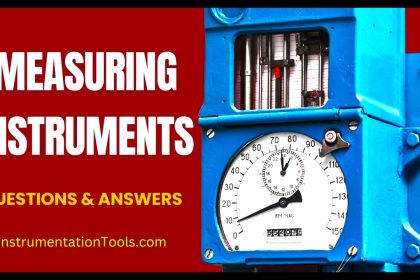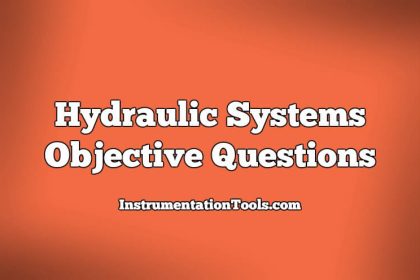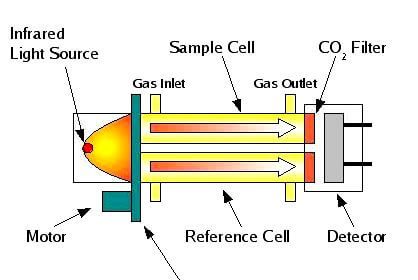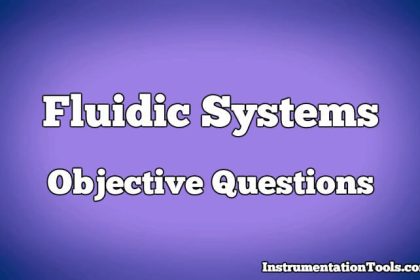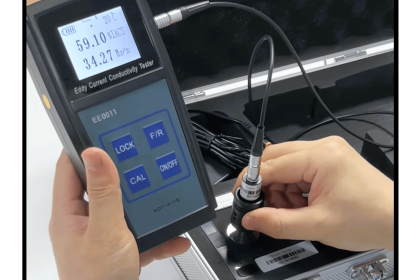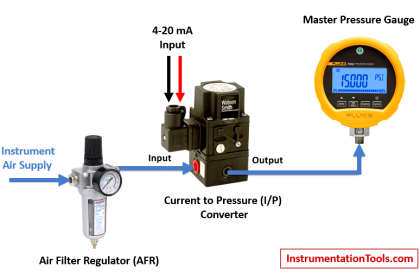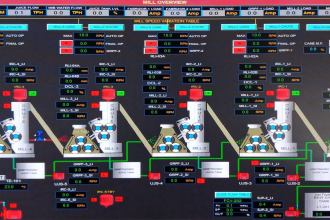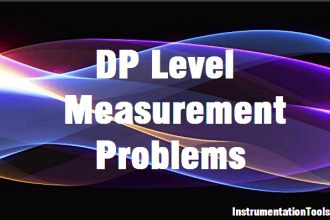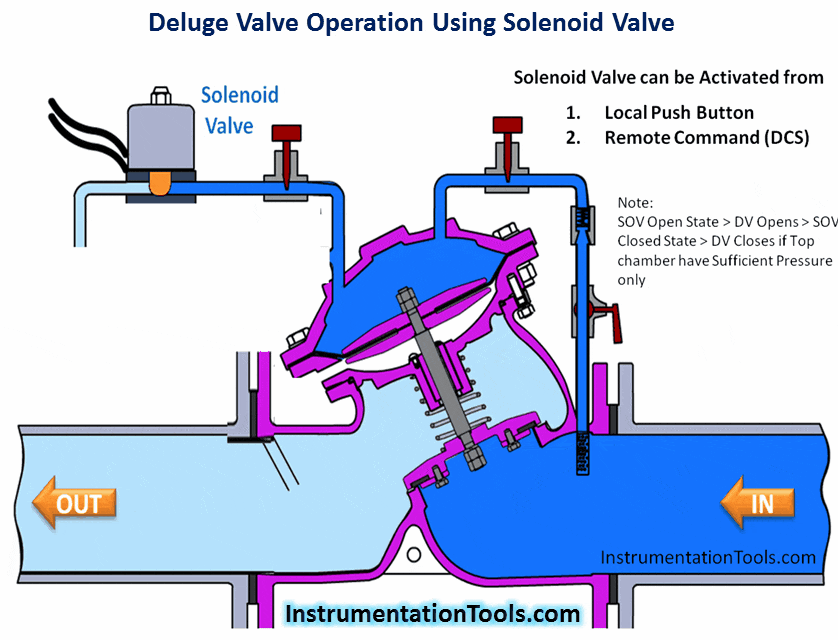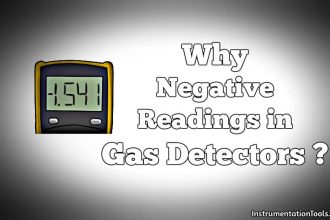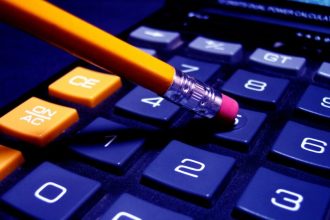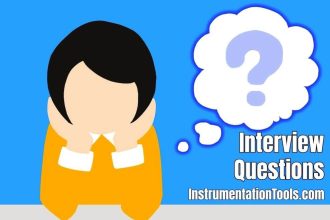Try the calibration MCQ on terminology and glossary questions covering essential terms, principles, and applications.
Calibration MCQ
This instrument calibration video provides detailed explanations for the objective questions and answers.
Question 1
What is Calibration?
A. Repairing an instrument
B. Verifying an instrument’s accuracy
C. Adjusting an instrument
D. Setting up an instrument
Show the Answer
Verifying an instrument’s accuracy
Question 2
What is Drift in calibration?
A. The smallest measurable value
B. Gradual change in an instrument’s measurements over time
C. The range of measurements an instrument can make
D. Sudden change in an instrument’s readings
Show the Answer
Gradual change in an instrument’s measurements over time
Question 3
What is Zero Adjustment?
A. Adjusting the span of the instrument
B. Setting the instrument’s maximum range
C. Adjusting an instrument to read zero at no input
D. Calibrating the instrument’s sensitivity
Show the Answer
Adjusting an instrument to read zero at no input
Question 4
What is Offset in calibration?
A. A constant deviation in measurement readings
B. The range of measurements an instrument can make
C. The consistency of measurements
D. The maximum measurable value
Show the Answer
A constant deviation in measurement readings
Question 5
What is As Found Data?
A. Data recorded after calibration
B. Data from the manufacturer
C. Historical performance data
D. Data recorded before calibration
Show the Answer
Data recorded before calibration
Question 6
What is Span?
A. The difference between maximum and minimum values
B. The average value of a range
C. The initial setting of an instrument
D. The maximum range of an instrument
Show the Answer
The difference between maximum and minimum values
Question 7
What is As Left Data?
A. Data recorded during calibration
B. Data from the instrument’s manual
C. Data recorded after calibration adjustments
D. Data from previous calibrations
Show the Answer
Data recorded after calibration adjustments
Question 8
What is Factory Calibration?
A. Calibration done in the field
B. Calibration done by the user
C. Calibration done at regular intervals
D. Initial calibration done by the manufacturer
Show the Answer
Initial calibration done by the manufacturer
Question 9
What is Measurement Uncertainty?
A. The doubt about measurement accuracy
B. The range of possible measurements
C. The smallest measurable value
D. The difference between measured and true values
Show the Answer
The doubt about measurement accuracy
Question 10
What is Out of Tolerance (OOT)?
A. Measurement exceeding acceptable limits
B. Final calibration value
C. Initial calibration value
D. Measurement within acceptable limits
Show the Answer
Measurement exceeding acceptable limits
Question 11
What is Traceability?
A. The process of calibration
B. The ability to trace a measurement back to its source
C. The error in measurement
D. The precision of an instrument
Show the Answer
The ability to trace a measurement back to its source
Question 12
What is Test Uncertainty Ratio (TUR)?
A. Ratio of measurement uncertainty to tolerance
B. Ratio of test results to specifications
C. Ratio of test to measurement time
D. Ratio of errors in test
Show the Answer
Ratio of measurement uncertainty to tolerance
Question 13
What is a Calibration Certificate?
A. A certificate of instrument ownership
B. A document for instrument purchase
C. A manual for instrument operation
D. A document that verifies an instrument’s calibration status
Show the Answer
A document that verifies an instrument’s calibration status
Question 14
What is Calibration Interval?
A. The period between successive calibrations
B. The instrument’s operating time
C. The time taken to perform a calibration
D. The duration of instrument use
Show the Answer
The period between successive calibrations
Question 15
What is the purpose of a Calibration Curve?
A. To indicate the calibration interval
B. To graphically represent the relationship between input and output
C. To show the instrument’s precision
D. To display the instrument’s range
Show the Answer
To graphically represent the relationship between input and output
Question 16
What is the significance of Environmental Conditions in calibration?
A. They are irrelevant to calibration
B. They determine the calibration interval
C. They define the instrument’s range
D. They affect the accuracy and reliability of calibration results
Show the Answer
They affect the accuracy and reliability of calibration results
Question 17
What is the function of a Calibration Standard?
A. To provide a reference value for accurate measurements
B. To define the calibration interval
C. To adjust the instrument’s zero point
D. To measure environmental conditions
Show the Answer
To provide a reference value for accurate measurements
Question 18
What does Calibration Tolerance mean?
A. The acceptable range of deviation from a specified value
B. The average measurement error
C. The smallest detectable change
D. The maximum measurable value
Show the Answer
The acceptable range of deviation from a specified value
Question 19
What is Calibration Verification?
A. The documentation of calibration data
B. The process of recalibration
C. Checking the calibration status without adjustment
D. The adjustment of an instrument’s settings
Show the Answer
Checking the calibration status without adjustment
Question 20
What is Calibration Adjustment?
A. Setting the calibration interval
B. Documenting calibration data
C. Modifying an instrument to correct its measurements
D. Checking the calibration status
Show the Answer
Modifying an instrument to correct its measurements
Question 21
What is Calibration Uncertainty?
A. The smallest change an instrument can detect
B. The range of measurements an instrument can make
C. The doubt associated with the result of a calibration
D. The precision of repeated measurements
Show the Answer
The doubt associated with the result of a calibration
Question 22
What is Calibration Due Date?
A. The date of the last calibration
B. The instrument’s purchase date
C. The scheduled date for the next calibration
D. The manufacturing date of the instrument
Show the Answer
The scheduled date for the next calibration
Question 23
What is Calibration Process?
A. The design of calibration equipment
B. The documentation of calibration results
C. The repair of a faulty instrument
D. A series of operations to establish and verify the performance of an instrument
Show the Answer
A series of operations to establish and verify the performance of an instrument
Question 24
What is Calibration Report?
A. A purchase record for the instrument
B. A manual for instrument operation
C. A certificate of instrument ownership
D. A document detailing the calibration results and procedures
Show the Answer
A document detailing the calibration results and procedures
Question 25
What is the purpose of Calibration Labels?
A. To provide instructions for instrument operation
B. To show the instrument’s model number
C. To display the manufacturer’s details
D. To indicate the calibration status and due date of an instrument
Show the Answer
To indicate the calibration status and due date of an instrument
Question 26
What is a Primary Standard in calibration?
A. The average of repeated measurements
B. The smallest detectable change
C. The highest quality standard used for calibration
D. The maximum range of an instrument
Show the Answer
The highest quality standard used for calibration
Question 27
What is a Secondary Standard?
A. The difference between measured and true values
B. A standard calibrated using a primary standard
C. The initial setting of an instrument
D. The smallest detectable change
Show the Answer
A standard calibrated using a primary standard
Question 28
What is Metrology?
A. The design of measurement instruments
B. The science of measurement
C. The process of calibration
D. The repair of faulty instruments
Show the Answer
The science of measurement
Question 29
What is Resolution?
A. The average measured value
B. The maximum range of an instrument
C. The smallest change an instrument can detect
D. The standard deviation of measurements
Show the Answer
The smallest change an instrument can detect
Question 30
What is Precision?
A. The closeness of repeated measurements to each other
B. The accuracy of a single measurement
C. The smallest measurable value
D. The range of possible measurements
Show the Answer
The closeness of repeated measurements to each other
Question 31
What is Repeatability?
A. The ability to measure the same value multiple times
B. The ability to measure different values accurately
C. The initial calibration value
D. The smallest measurable value
Show the Answer
The ability to measure the same value multiple times
Question 32
What is Accuracy?
A. The smallest measurable value
B. The range of measurements an instrument can make
C. The repeatability of measurements
D. The closeness of a measurement to the true value
Show the Answer
The closeness of a measurement to the true value
Question 33
What is Error?
A. The initial calibration value
B. The smallest change an instrument can detect
C. The difference between measured and true values
D. The maximum range of an instrument
Show the Answer
The difference between measured and true values
Question 34
What is Linearity in calibration?
A. Deviation of an instrument’s response from a straight line
B. The range of measurements an instrument can make
C. The consistency of an instrument’s measurements
D. The smallest change an instrument can detect
Show the Answer
Deviation of an instrument’s response from a straight line
Question 35
What is Sensitivity?
A. The difference between measured and true values
B. The consistency of measurements
C. The smallest change an instrument can detect
D. The maximum range of an instrument
Show the Answer
The smallest change an instrument can detect
Question 36
What is Hysteresis in calibration?
A. The maximum value an instrument can measure
B. The lag between input and output
C. The average of repeated measurements
D. The difference between measured and true values
Show the Answer
The lag between input and output
Read Next:
- Measurement and Calibration Questions
- Flow Transmitter Maintenance and Calibration
- Displacer Level Transmitter Calibration
- Gas Flow Meter Calibration Procedure
- Raw DataSheet for Pressure Calibration
